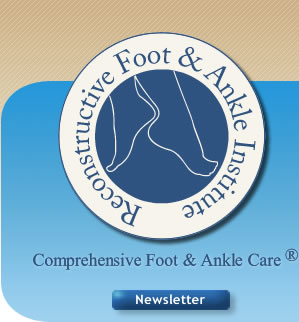Hammertoes
Hammertoes are one of the most common foot disorders, and are produced by a muscle imbalance in the foot, which causes the end of the toe to bend down while the closer or more proximal part of the toe bends up. More often than not, the joints may stiffen permanently in this awkward position. Hammertoes can be inherited, caused by a nerve abnormality or abnormally tight hose, socks or shoes. When the crooked toes rub up against the shoes, painful corns may develop. If not treated properly, pain will persist. Redness, swelling and infection will consequently develop.
Conservative treatment includes square, open-toed, high-toe-boxed or prescription shoes. Orthotics are foot beds that help support the foot and can reduce the hammertoe deformity. Other measures include cushioning of the pressure spots with adhesive donut-shaped pads or other forms of padding. It is not advisable to remove corns or calluses yourself as this “bathroom surgery” can lead to infection. If the corns continually grow back and pain persists, surgery may be required.
There are several different types of surgery for these problems. Often if conservative treatment doesn’t solve the problem then a tenotomy can be performed to straighten the toe. This is a new procedure that allows you to walk the same day, have the surgery in the office and requires no time off work. You will have your toe anesthetized with a small amount of anesthetic and the tendon on the bottom of the toe is cut. This will immediately straighten your toe and relieve the problem if it is a flexible deformity.
If your toe is crooked and can’t be straightened the tenotomy can still be performed but the results may not be as great as if the deformity was flexible. In cases where bone is the cause of the toe the surgery consists of the flattening and straightening of the affected toes by removing a piece of bone and/or lengthening of the shortened tendon. As in all surgery, your recovery period depends on the severity of the deformity, your age and the type of work that you do. The surgery is usually 10 minutes long and is done as an outpatient with no overnight stay in the hospital. You can go to sleep or stay awake for the procedure. Most patients have little or no pain, walk that day and take minimal time off work.
